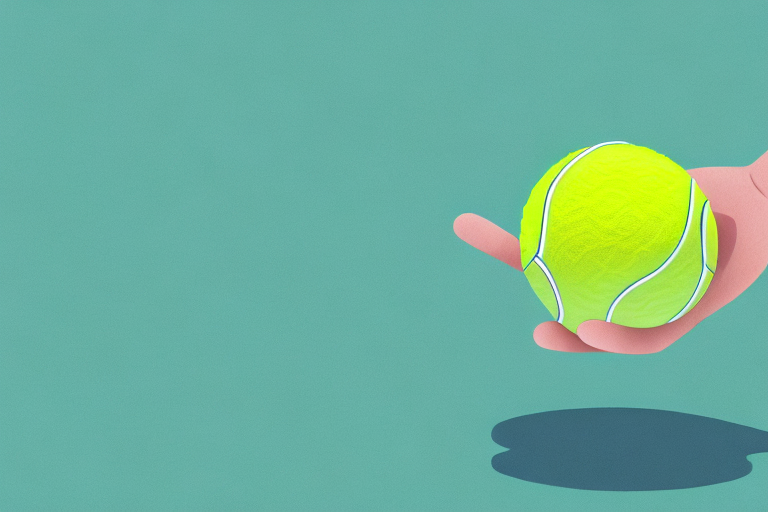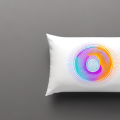If you suffer from chronic pain, you’ve probably tried almost everything to relieve it. From medication to physical therapy, it can be a real struggle to find relief. One of the most effective and affordable methods for pain relief is trigger point therapy, and it can be done with something as simple as a tennis ball. In this article, we’ll explore the science behind trigger point therapy, how to use a tennis ball for pain relief, and tips for making the most out of your therapy sessions.
Understanding Trigger Points and Their Causes
Trigger points, also known as knots or myofascial trigger points, are areas of hyperirritability in the muscles that cause pain and discomfort. They can be the result of muscle strain, injury, poor posture, or even stress. When a trigger point is activated, it can cause a “referred” pain sensation in other areas of the body. For example, a trigger point in the neck can cause pain in the head, shoulders, and arms.
It is important to address trigger points as they can lead to chronic pain and decreased range of motion. Treatment options include massage therapy, physical therapy, and trigger point injections. Self-care techniques such as stretching and foam rolling can also be effective in managing trigger points. It is recommended to consult with a healthcare professional to determine the best course of treatment for your specific needs.
The Science Behind Using a Tennis Ball for Pain Relief
Using a tennis ball for trigger point therapy works by applying pressure to the affected area, which helps to release tension and encourage blood flow to the area. This increased blood flow can help to reduce inflammation and promote healing. When you apply pressure to a trigger point, it can be uncomfortable or even painful, but this discomfort should diminish as you continue with the therapy.
Additionally, using a tennis ball for pain relief can also help to improve flexibility and range of motion. By targeting specific trigger points, you can release tight muscles and improve overall mobility. This can be especially beneficial for athletes or individuals who engage in regular physical activity.
How to Choose the Right Tennis Ball for Trigger Point Therapy
When choosing a tennis ball for therapy, look for one that is firm but not too hard. You want to be able to apply pressure to the affected area without causing additional discomfort. A traditional yellow tennis ball works well, but you can also use a specialized massage ball if you prefer.
It’s important to note that the size of the tennis ball can also make a difference in your therapy. A smaller ball may be more effective for targeting specific trigger points, while a larger ball may be better for covering larger areas of muscle. Experiment with different sizes to find what works best for you and your needs.
Preparing Your Body for Tennis Ball Therapy
Before you begin your therapy session, it’s important to warm up your muscles to avoid injury. You can do this by taking a warm bath or shower, doing some light stretching, or even doing some gentle yoga poses. Make sure the area you will be treating is exposed and accessible, and make sure you have a comfortable and supportive surface to lie on.
It’s also important to stay hydrated before and after your therapy session. Drinking plenty of water can help flush out toxins and reduce muscle soreness. Additionally, it’s recommended to avoid eating a heavy meal before your therapy session, as this can make you feel uncomfortable and reduce the effectiveness of the therapy.
Step-by-Step Instructions for Trigger Point Release Using a Tennis Ball
To start your therapy session, lie down on your back and place the tennis ball under the affected area. Use your body weight to apply pressure to the ball, and roll the ball around the area, taking care to focus on any particularly sensitive spots. You can also use your hands to move the ball around if that works better for you. Continue with this rolling motion for 5-10 minutes, or until you feel you have adequately released the tension in the area.
It is important to note that trigger point release using a tennis ball should not be painful. If you experience any sharp or intense pain, stop immediately and consult with a healthcare professional. Additionally, it is recommended to drink plenty of water after the therapy session to help flush out any toxins that may have been released during the process.
Tips and Tricks for Effectively Targeting Trigger Points with a Tennis Ball
When using a tennis ball for trigger point therapy, it’s important to take your time and really focus on the affected area. You may also find it helpful to combine therapy with some gentle stretching or yoga poses to encourage blood flow and further relieve tension. Be careful not to overdo it, as too much pressure can cause additional discomfort and even bruising.
It’s also important to note that trigger point therapy with a tennis ball should not be used as a substitute for professional medical treatment. If you are experiencing chronic pain or discomfort, it’s always best to consult with a healthcare provider to determine the underlying cause and appropriate treatment plan. Additionally, if you have any pre-existing medical conditions or injuries, be sure to speak with your doctor before attempting trigger point therapy on your own.
Common Mistakes to Avoid When Using a Tennis Ball for Pain Relief
One of the most common mistakes people make when using a tennis ball for therapy is applying too much pressure. Remember, the goal is to release tension, not cause additional pain. You should also avoid using a ball that is too soft, as it won’t provide enough pressure to be effective.
Another mistake to avoid is using a tennis ball on areas that are already injured or inflamed. This can worsen the condition and cause more pain. It’s important to consult with a healthcare professional before using a tennis ball for pain relief, especially if you have a pre-existing medical condition or injury. Additionally, make sure to properly clean the tennis ball before and after each use to prevent the spread of germs and bacteria.
Incorporating Tennis Ball Therapy into Your Daily Routine
You don’t have to wait until you’re in pain to start using a tennis ball for therapy. Begin incorporating this method into your daily routine to help prevent pain and tension from building up in the first place. This can be as simple as spending a few minutes rolling a ball under your feet or using it on your neck and shoulders after a long day at work.
Other Tools and Techniques to Complement Your Tennis Ball Therapy
While tennis ball therapy can be incredibly effective, it’s not always enough on its own. Consider incorporating other tools and techniques into your routine, such as foam rollers, massage balls, and stretching, for maximum pain relief and muscle health. Consult with a physical therapist or healthcare professional if you’re unsure what tools or techniques are right for you.
In conclusion, trigger point therapy with a tennis ball is a simple and effective way to manage chronic pain and reduce tension in your muscles. By understating how trigger points work and taking your time when using a tennis ball, you can experience reduced pain and discomfort. Don’t hesitate to consult with a professional for more guidance or use a combination of methods to fully address your pain.





